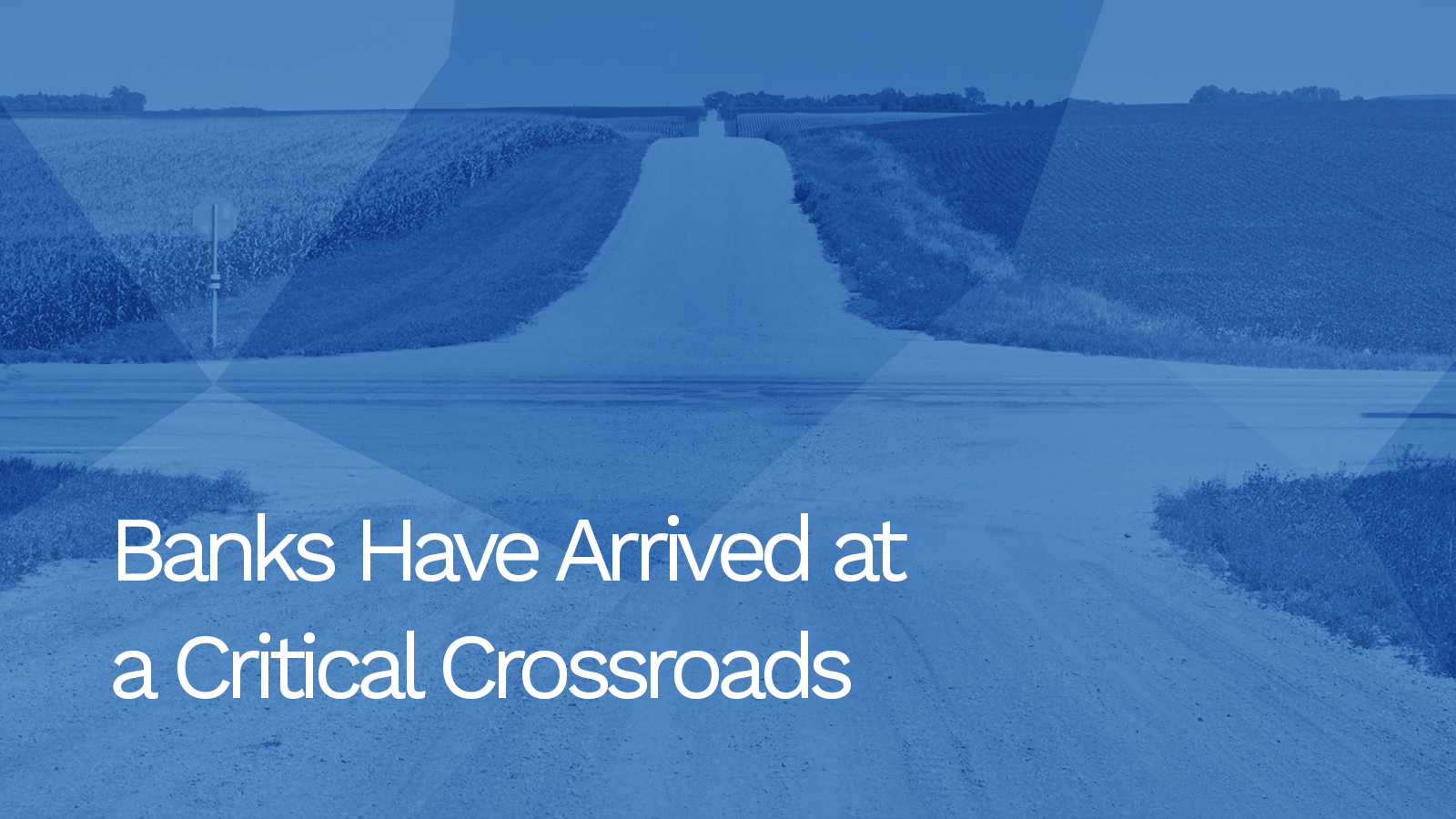
Banks Have Arrived at a Critical Crossroads
Consumers are getting more comfortable transacting and interacting online. Banks need to start collaborating with fintechs in earnest or risk being left behind.
For the last several years, banks have talked about the need for digital transformation, yet many institutions haven’t made any meaningful changes. While the need to become more nimble and innovative has been building for a while, with the COVID-19 crisis making people rethink everything, from how they bank to how they do business, traditional financial institutions must act now or risk losing market share to newer and more tech-savvy banks.
According to a Fidelity National Information Services survey, 45% of respondents said they’ve changed the way they interact with their banks since the coronavirus outbreak, with 31% saying they would continue to use more online and mobile banking in the future. The survey also found that more people are using mobile wallets to avoid using paper money or cheques.
In April, Capgemini, a global financial services consulting firm, released its World Fintech 2020 report, which took banks to task for failing to provide consumers better services and for not properly working with fintechs to deliver more innovative products. In its report, the company said, “the gap between what customers expect and what banks deliver has never been wider. All customers… demand a seamless, real-time and hyper-personalized banking experience that complements their digital lifestyle.”
It found that 16% of all customers, and 48% of Gen Y and tech-savvy clients, are likely to switch banks over the next 12 months, with respondents saying that their primary bank has a narrow range of products and services, or it’s not well integrated with other platforms or apps they use daily. Respondents listed five main reasons as to why they would adopt banking services from non-traditional players:
- 70% are enticed by low-cost offerings
- 68% want easier-to-use services
- 54% want faster services
- 39% are looking for better features
- 39% want more personalized products
Banks need to embrace digitalization more fervently because an increasing number of fintech companies are taking advantage of the gaps that traditional institutions can’t fill. “Capitalizing on the growing demands for improved services, BigTechs (Amazon, Apple, Facebook and others) and challenger banks are not wasting time when it comes to expanding their offerings and market penetration,” said the company in its report.
Creating seamless connections
What many banks have been slow to realize is that they don’t have to invest millions into creating their own tech products. Fintechs aren’t looking to put traditional banks out of business. If anything, fintechs need banks to get their products to market and banks need fintechs to bring more innovative offerings to their customers. “Now more than ever, bank/fintech collaboration is a powerful strategy to help incumbents across the business value chain fill gaps in operations, regulations, onboarding, data, technology adoption, and customer experience – to give today’s customers what they demand,” said Capgemini.
One way for companies to collaborate is to embrace what Capgemini calls Open X, which it says is the next step in open banking. Open X is an open platform approach where industry players work together to improve not just technology, but the customer experience, too. Like open banking, it relies on data transparency and information sharing between the bank and the fintech, but it goes even further by connecting all kinds of companies to create a far more seamless banking experience.
Uber is an example of a company that’s doing Open X right says Capgemini. It collaborates with car owners, relies on Google maps for navigation, accepts payment from all sorts of companies, including Venmo in the U.S. and Patym in India, and it launched Uber Money, which gives drivers a virtual debit card that allows them to receive earnings immediately and spend that money as they see fit through the app itself. Using APIs that connect its partners’ tech with its own, it’s built an ecosystem of partners where everyone benefits.
It’s easy to see how this sort of Open X experience could transform banking. Imagine if you could send money to someone via WhatsApp instead of your bank’s mobile app, or if you could easily transact from your various business bank accounts in one place. Goldman Sachs is already looking at ways to provide loans to small and medium-sized businesses through Amazon’s lending platform, while BBVA, a Spanish bank, said in January that it was going to help a restaurant called El Celler de Can Roca sell its products through Amazon, with the hopes that it might one day start selling its own services on the e-commerce giant’s site.
In an article, the bank said that it has a “double-pronged objective in using El Celler’s products to kick off its journey into Amazon. First, the bank wants to share its digital expertise with the Roca brothers (the restaurant’s owners) so they can benefit in selling their exclusive products online. This approach also provides BBVA with a pilot project where it can trial the functionality of the world’s largest e-commerce portal, paving the way for the bank to offer other types of financial products in the future.”
Clearly, with the right APIs and the proper technology, anything is possible. And with COVID-19 helping consumers become even more at ease with using online tools, banks must start doing what they can to enhance their digital transformation plans and increase their collaboration with fintechs. It may be now or never.

